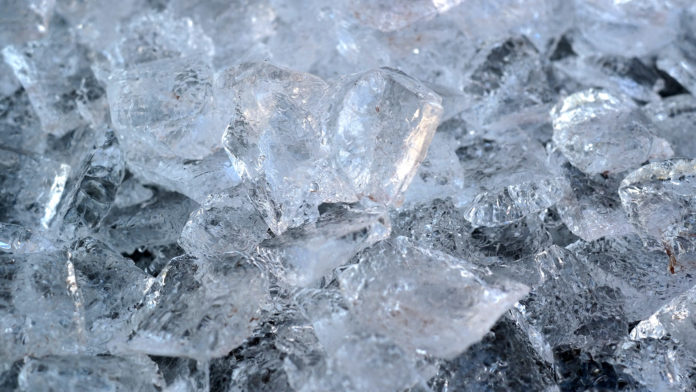Ah, that fresh crack that comes with twisting a full ice cube tray to extract those first pieces for a summer drink. But those sticky forces that are easy to overcome when surfaces are small multiply quickly when the ice covers larger areas like windshields, power lines, or the outer walls of high-rise buildings.
A new kind of anti-ice coating could make it a snap to remove ice sheets up to a square meter in size with only the force of its own weight.
The new class of materials, called low interfacial toughness (LIT) materials, was published in Science. These materials represent an entirely new strategy for reducing ice adhesion.
“If designed correctly, the force to knock down a single domino is enough to topple them all — adding more dominoes doesn’t require you to push any harder,” says lead author Kevin Golovin, assistant professor of mechanical engineering at the University of British Columbia Okanagan, in a statement.
“It’s the same with LIT materials. Once you form a crack it can de-ice the entire interface, whether it’s the length of a windshield, an airplane wing or a turbine blade.”
Until now, passive de-icing materials have largely focussed on lowering adhesion strength with slippery materials like Teflon (PTFE). However, materials like these are not durable in the long term, and they don’t work on large surfaces.
But Golovin found that lowering adhesion toughness allows cracks to easily form under the ice. One single crack can easily spread in a domino effect, allowing it to easily shear off no matter how large a surface the ice covers. The plastics used to make the LIT materials could be biodegradable or bio-based.
Used as a spray to coat surfaces, they could have many future applications. Imagine a windshield after an ice or snow storm that could be cleared with brushing instead of scraping; power lines that clear themselves to reduce the risk of being downed in an ice storm; or eliminating the need for large volumes of environmentally unfriendly de-icing fluid on airplanes between flights.
It may seem like a smaller innovation, but LITs could also be applied to automatic ice machines, which currently use heat to dislodge ice cubes to dispense them. That process can make up a quarter of the freezer’s energy needs.
This approach to creating icephobic surfaces has uses all year round. But this new understanding of how materials can behave in the spaces where they meet may also have important future applications beyond ice removal.











































